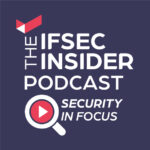Innovation is changing our lives in every way possible.
In the building and construction environment innovation has morphed the landscape from early dwellings whose primary objective was shelter from a hostile environment to today’s modern structures, which have sophisticated communication technologies, energy-efficient appliances, sensors, access controllers and video surveillance devices.
Now the challenge is to bring these elements together to create an oasis of comfort, security and productivity.
When the term ‘smart buildings’ was first coined in the 1980s it simply meant providing individual telecommunications services to tenants under shared tenant services.
Connectivity had finally come to the fore as an important reason for the selection of buildings as offices, homes, manufacturing or retail sites.
So, what does a ‘smart building’ really mean today? The technologies have evolved over the years to a point where their integration and interoperability using internet-of-things (IoT) protocols is finally realising the pillars of a truly smart building.
The needs of a building’s occupants, as well as other criteria from an environmental or a scalability perspective, can be categorised into three essential pillars: being secure, being green and being connected.
Smart is secure
Security and control is primary to the basic definition of domain. Whether the domain is your home or business office, humans have to feel complete privacy and security about who else has what level of access to the space.
What was originally keys and locks along with a security guard translates in a smart building to a sophisticated cloud-based security system that thrives on centrally managed and remotely accessed video surveillance and access control systems, built to be scalable for multiple locations.
In the wake of increased IT penetration, it must also deploy best-in-class network security measures at all times.
Smart is green
Improved energy efficiency is a bare minimum goal of a smart building. It involves taking a top-down holistic perspective in looking at every aspect of a customer’s operation that has the potential to impact energy requirements.
Technologies like an interrupt-operation mode on air conditioners while continuing to ensure comfort of residents, solar panels, motion-triggered light switches, sensor-based alerts if a refrigeration unit door is left ajar are all examples of initiatives designed to optimise consumption of energy or schedule its timing for load on the electric grid.
Smart is connected
Interoperability is the key here. Linking building systems together and then connecting the building automation system to enterprise systems is enabling facility executives to reap smart-building benefits.
Integration between access control and video verification, for instance, allows a user to see live video as well as the cardholder’s picture when a given access card is presented at a door reader.
Another example is using data from the building security system to turn off lights, reduce cooling when occupants are not present or even unlock doors from your mobile to permit entry to maintenance personnel.
Proximity beacons, cameras or sensors to track foot traffic in retail is another example of how connected technologies are yielding insights that in turn inform the design and use of building space.
Be ‘CloudSmart’
As more owners specify open, standard communications for building control systems, the cloud seems to be the ideal storage location for building data.
Unlike local building-centric systems, a cloud-based infrastructure allows an unprecedented degree of data aggregation (even across multi-site, multi-location building infrastructure) and analytics that provide further insights into enhancing customer experience and operational efficiency.
Video analytics including facial recognition, for instance, can easily be accomplished with a central video storage repository that is integrated with advanced facial capture applications.
Smart business
Done properly smart buildings ultimately help the bottom line, pleasing executives as well as making for a more comfortable working environment for the workforce as a whole. The tenant enjoys greater control of internal climate conditions, effective resolution of HVAC related issues and greater reliability, which all translates into higher rental value for the owner.
Remote access of centralised, aggregated information with control and monitoring of a building offer increased level of comfort and time savings to the facilities managers.
Early detection of problems is possible through predictive rules and algorithms that can automate maintenance and ease of information access in case of any issue.
The up-front costs depend on the scope of a smart building project but the returns are proportionately commensurate not just in terms of cost savings over the years but also in reputation and consequent premiums for additional services and smart capabilities offered.
The level of sophistication implemented can vary greatly based on the location. For instance, water conservation systems if applied in an area that receives heavy rainfall will have lower payback compared to one placed in a drought-susceptible region.
Thus, a calculated and well thought out approach to making your building smarter can reap rich dividends, not least a more sustainable, enjoyable and productive use of the building by its occupants.
Listen to the IFSEC Insider podcast!
Each month, the IFSEC Insider (formerly IFSEC Global) Security in Focus podcast brings you conversations with leading figures in the physical security industry. Covering everything from risk management principles and building a security culture, to the key trends ahead in tech and initiatives on diversity and inclusivity, the podcast keeps security professionals up to date with the latest hot topics in the sector.
Available online, and on Spotify, Apple Podcasts and Google Podcasts, tune in for an easy way to remain up to date on the issues affecting your role.


[…] This article was published on https://www.ifsecglobal.com and is being reproduced here, with all permissions. The original article is available at https://www.ifsecglobal.com/secure-green-and-connected-three-pillars-of-a-truly-smart-building/ […]